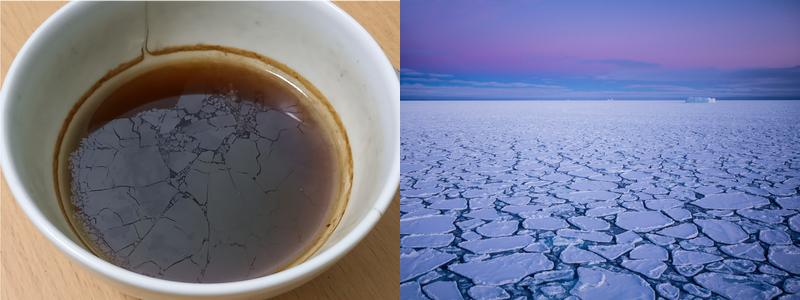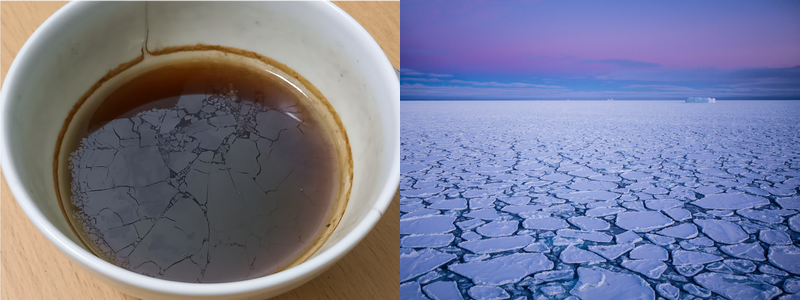Water Waves Break Up Floating Film
“Tea scum” is a thin film of minerals and organic molecules that can develop on the surface of a cup of tea. As it breaks up, this film becomes riddled with fissures in a pattern that resembles the cracks in sea ice. Michael Berhanu of Paris City University and his colleagues developed a physical model that may provide insights into these situations and other cases—such as biofilms—where a thin, flexible solid floats on top of a fluid [1].
The researchers sprinkled a powder of 10-µm-wide graphite particles onto the water surface in a wave tank to create a “raft,” a film of particles held together by capillary forces. Then they generated 3-Hz-frequency (17-cm-wavelength) waves at one end of the tank and sent them propagating toward the roughly 10-cm-wide raft. The raft gradually broke apart into pieces that looked similar to the polygon-shaped fragments observed in arctic ice sheets.
But Berhanu and his colleagues found that the break-up mechanisms for the raft were different from those of an ice sheet. Analyzing videos of the wave tank, the researchers developed a model in which the waves push and pull on the raft horizontally, causing it to crack and separate. However, these push–pull forces are negligible in the sea-ice environment, where previous research has shown that the dominant breaking mechanism is vertical bending of an ice sheet caused by the up-and-down motion of water waves. Still, the researchers say that the raft model can potentially provide useful information on ice floes. For example, the size distribution of raft pieces over a certain range followed a power-law relationship with exponent −1, which is compatible with some ice floe observations.
–David Ehrenstein
David Ehrenstein is a Senior Editor for Physics Magazine.
References
- L. Saddier et al., “Breaking of a floating particle raft by water waves,” Phys. Rev. Fluids 9, 094302 (2024).





